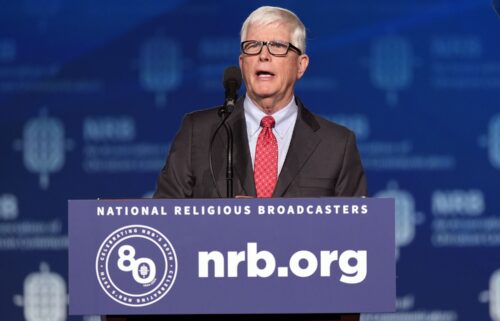US retail spending picked up in August, mostly due to sales at gas stations
By Bryan Mena, CNN
Washington, DC (CNN) — US retail sales picked in August, boosted by higher gas prices, as spending on other items grew modestly.
Retail sales, which are adjusted for seasonal swings but not inflation, rose 0.6% in August, the Commerce Department reported Thursday. That’s a slightly faster pace than July’s revised 0.5% gain, and marks the fifth straight month of growth. It’s also well above economists’ expectation of a 0.2% increase.
The increase was largely driven by spending at gas stations, which advanced 5.2% last month. Spiking oil prices due to OPEC+ production cuts, strong demand and disruption from a deadly flood in Libya have pushed up prices at the pump. The national average for regular gasoline stood at $3.86 a gallon on Thursday, according to AAA, the highest level in 10 months.
Excluding sales at gasoline stations, retail spending advanced a more modest 0.2% in August from July.
Retail spending increased across most categories, including at restaurants and grocery stores. Sales of furniture and at specialty stores, such as those that sell sporting goods, fell 1% and 1.6% respectively. Online retail sales in August were flat, after jumping in July due to Amazon’s Prime Day promotional event.
Despite 11 interest rate hikes from the Federal Reserve intended to cool demand, the US economy remains on strong footing, with American shoppers still doling out cash thanks to a strong job market.
But after a summer of robust spending, US consumers are facing a number of economic challenges for the rest of the year, including student loan payments restarting and tougher lending standards, which could curb spending.
“Fitch continues to view the consumer as relatively healthy, supported by low unemployment and somewhat declining goods inflation,” wrote David Silverman, senior director at Fitch Ratings, in an analyst note.
However, he noted that “headwinds are emerging,” citing lower consumer savings and the resumption of student loan payments this fall.
Resilient spending put to the test
The US economy is widely expected to cool in the coming months, and since consumer spending accounts for about two-thirds of economic output, a weaker economy typically means softer spending. But economists don’t expect a recession this year. While Goldman Sachs recently reduced its bet of a US recession, the Wall Street bank still thinks there’s a 15% chance of an economic downturn.
The job market is also expected to slow, which would include softer wage growth. That could prompt US consumers to pump the brakes on their spending.
“Slowing labor market gains and softer disposable income growth in the coming months will likely mean ongoing consumer cautiousness. And it appears that consumers are already taking note,” wrote Lydia Boussour, senior economist at EY-Parthenon, in a note.
However, if inflation slows in the months ahead, that could actually maintain economic activity, since it means consumers have regained some spending power.
“Encouragingly, falling inflation should continue to provide a tailwind to real wages and avoid a retrenchment in consumer activity,” Boussour added.
The Consumer Price Index rose 3.7% in August from a year earlier, up from July’s 3.2% rise, largely due to higher gas prices. Economists still expect inflation to cool later in the year, despite volatile energy markets. But gasoline prices are highly visible indicators of inflation, so more pain at the pump could also dampen consumers’ attitudes.
The-CNN-Wire
™ & © 2023 Cable News Network, Inc., a Warner Bros. Discovery Company. All rights reserved.



